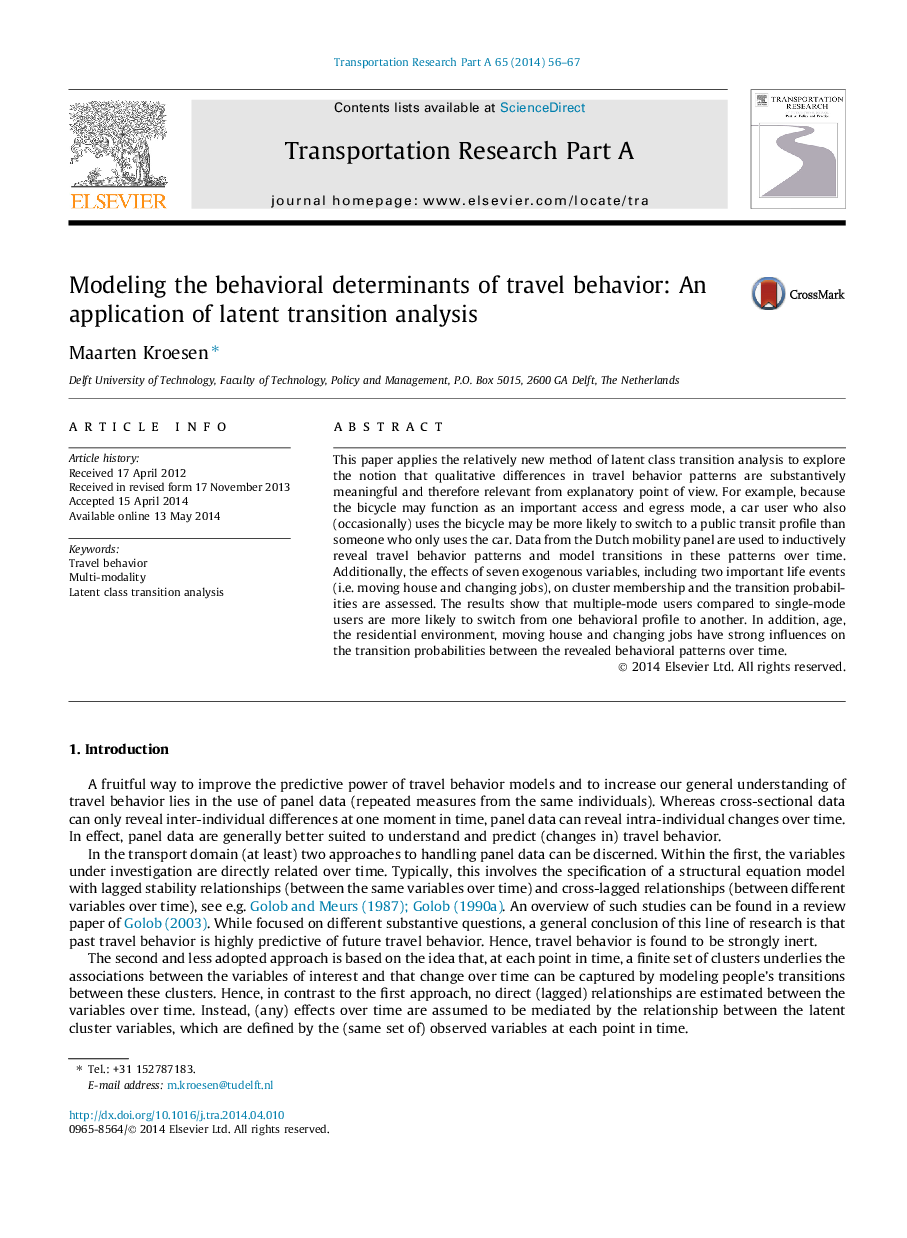| Article ID | Journal | Published Year | Pages | File Type |
|---|---|---|---|---|
| 311221 | Transportation Research Part A: Policy and Practice | 2014 | 12 Pages |
•A latent class model is estimated to reveal different travel behavior patterns.•A latent transition model is estimated to reveal transitions in travel behavior patterns over time.•Multiple-mode users are more likely than single-mode users to switch between behavioral patterns.•Moving house and changing jobs affect the revealed travel behavior patterns in different ways.
This paper applies the relatively new method of latent class transition analysis to explore the notion that qualitative differences in travel behavior patterns are substantively meaningful and therefore relevant from explanatory point of view. For example, because the bicycle may function as an important access and egress mode, a car user who also (occasionally) uses the bicycle may be more likely to switch to a public transit profile than someone who only uses the car. Data from the Dutch mobility panel are used to inductively reveal travel behavior patterns and model transitions in these patterns over time. Additionally, the effects of seven exogenous variables, including two important life events (i.e. moving house and changing jobs), on cluster membership and the transition probabilities are assessed. The results show that multiple-mode users compared to single-mode users are more likely to switch from one behavioral profile to another. In addition, age, the residential environment, moving house and changing jobs have strong influences on the transition probabilities between the revealed behavioral patterns over time.
